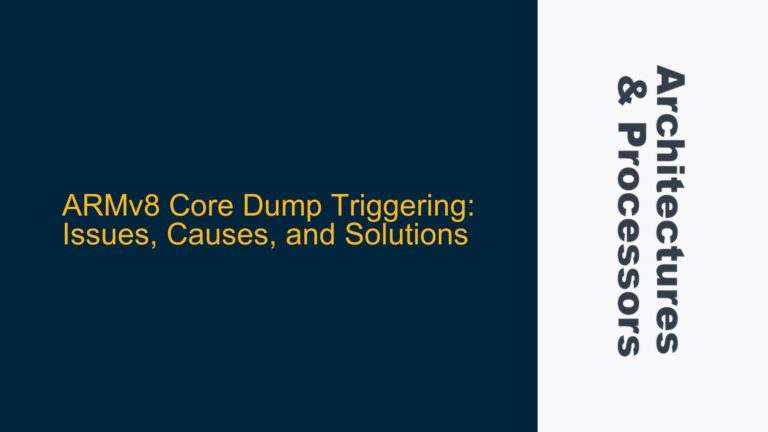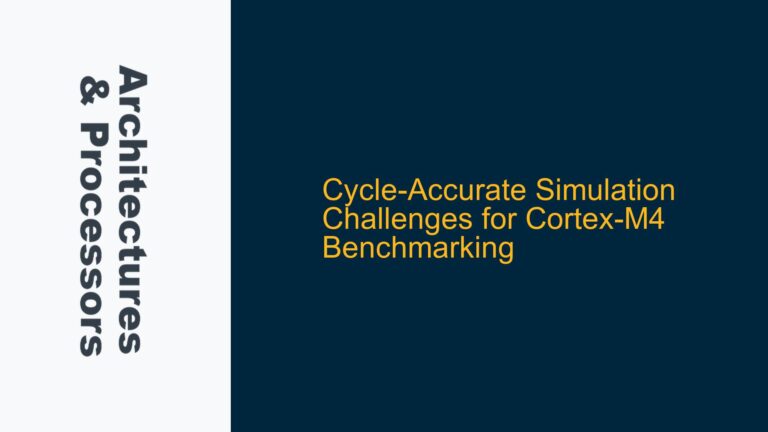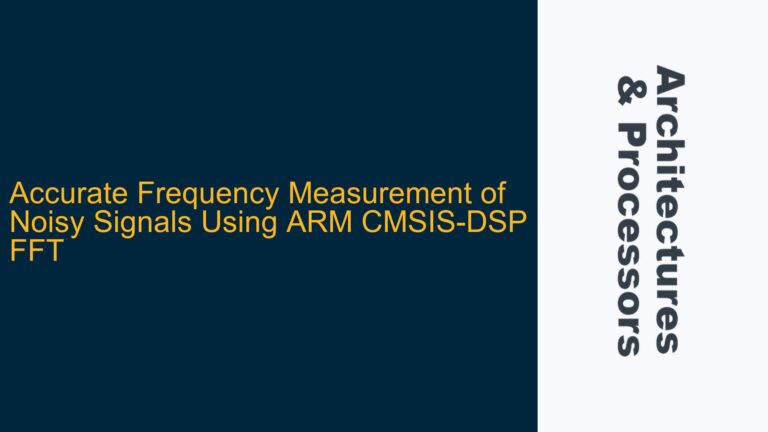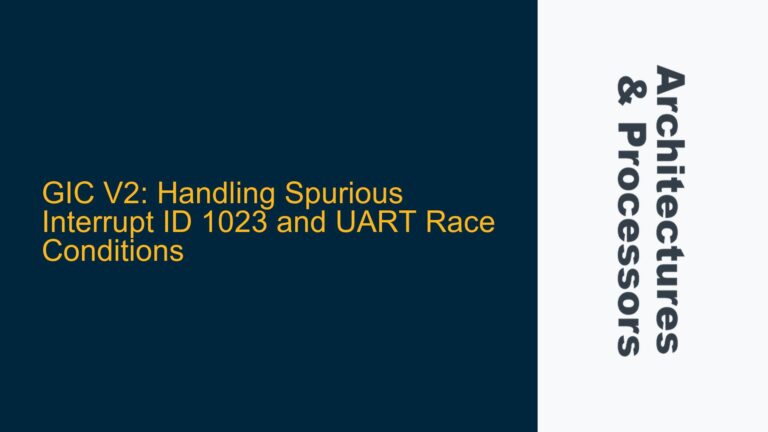Cortex-A53 Cache Policy Configuration via SCTLR and MMU Descriptors
The Cortex-A53 processor, a member of the ARMv8-A architecture family, employs a sophisticated cache policy mechanism that is critical for optimizing memory access performance. The cache policy is determined by a combination of settings in the System Control Register (SCTLR) and the Memory Management Unit (MMU) translation table descriptors. Understanding how these configurations interact is essential for ensuring proper cache behavior, especially when enabling caching and defining memory attributes.
The SCTLR register controls various system-level features, including the enablement of caches. When the I and C bits in the SCTLR register are set, the instruction and data caches are enabled, respectively. However, the cache policy for specific memory regions is further refined by the MMU translation table descriptors. These descriptors define memory attributes such as cacheability, shareability, and memory type (e.g., Normal, Device).
In the MMU configuration, the memory attributes are specified using the MAIR (Memory Attribute Indirection Register) and the AttrIndx field in the page table descriptors. The MAIR register contains eight 8-bit entries, each defining a set of memory attributes. The AttrIndx field in the page table descriptor selects one of these entries to apply to the corresponding memory region. For example, if the AttrIndx field points to an MAIR entry with the value 0xFF, it indicates Normal Memory with Inner Write-Back, Write-Allocate, and Outer Write-Back, Write-Allocate attributes.
When the SCTLR register enables caching and the MMU descriptors specify memory attributes, the Cortex-A53 processor uses these settings to determine the cache policy for each memory transaction. This hierarchical configuration allows fine-grained control over cache behavior, enabling developers to optimize performance for specific workloads.
Misconfiguration of MAIR and AttrIndx Fields Leading to Unexpected Cache Behavior
One of the most common issues in Cortex-A53 cache policy configuration arises from misconfigurations of the MAIR register and the AttrIndx fields in the MMU translation table descriptors. These misconfigurations can lead to unexpected cache behavior, such as incorrect cacheability, shareability, or memory type settings, which can severely impact system performance and correctness.
The MAIR register must be programmed with the appropriate memory attribute encodings before the MMU is enabled. Each entry in the MAIR register corresponds to a specific memory attribute configuration, and the AttrIndx field in the page table descriptors must reference these entries correctly. For example, if the MAIR register is not initialized properly, or if the AttrIndx field points to an incorrect entry, the resulting cache policy may not match the intended configuration.
A typical mistake is using an incorrect encoding for the memory attributes in the MAIR register. For instance, if the developer intends to configure a memory region as Normal Write-Back, Write-Allocate, but mistakenly sets the MAIR entry to 0x00 (which typically represents Device memory), the processor will treat the memory region as Device memory, leading to non-cacheable accesses and potential performance degradation.
Another common issue is the misalignment between the AttrIndx field and the MAIR entries. If the AttrIndx field references an MAIR entry that has not been defined or is reserved, the processor may default to a conservative cache policy, such as Non-cacheable, which can result in suboptimal performance.
Additionally, the shareability attribute must be configured correctly to ensure proper cache coherency in multi-core systems. If the memory region is marked as Inner Shareable but the corresponding cache policy does not support coherency, the system may experience data corruption or stale data issues.
Correct Configuration of MAIR and AttrIndx Fields for Optimal Cache Performance
To ensure optimal cache performance and avoid the pitfalls of misconfiguration, developers must carefully program the MAIR register and correctly reference its entries in the MMU translation table descriptors. The following steps outline the process for configuring the cache policy on the Cortex-A53 processor:
First, initialize the MAIR register with the desired memory attribute encodings. Each entry in the MAIR register corresponds to a specific memory attribute configuration, and the encoding must match the intended cache policy. For example, to configure a memory region as Normal Write-Back, Write-Allocate, the MAIR entry should be set to 0xFF. The table below provides a reference for common memory attribute encodings:
| Memory Type | MAIR Encoding |
|---|---|
| Normal, Non-cacheable | 0x00 |
| Normal, Write-Back | 0xFF |
| Device, nGnRE | 0x04 |
| Device, GRE | 0x0C |
Next, configure the MMU translation table descriptors to reference the appropriate MAIR entries using the AttrIndx field. The AttrIndx field is a 3-bit value that selects one of the eight MAIR entries. For example, if the desired memory attributes are defined in MAIR entry 2, the AttrIndx field should be set to 0b010.
After programming the MAIR register and the MMU descriptors, enable the MMU and caches by setting the appropriate bits in the SCTLR register. The I and C bits in the SCTLR register control the instruction and data caches, respectively. Setting these bits enables caching for the corresponding memory regions, using the cache policy defined by the MAIR and AttrIndx configurations.
Finally, verify the cache policy by performing memory accesses and observing the cache behavior. Tools such as ARM DS-5 or Lauterbach TRACE32 can be used to monitor cache activity and ensure that the configured cache policy is being applied correctly.
By following these steps, developers can avoid common pitfalls and ensure that the Cortex-A53 processor’s cache policy is configured optimally for their specific application. Proper configuration of the MAIR register and MMU descriptors is critical for achieving the desired balance between performance, power efficiency, and system reliability.






